Table of Contents
ToggleVolleyball Court Lighting Standards
Lux and Footcandle Standards
Volleyball, like many team sports, demands precise lighting to ensure optimal performance. Light levels are typically measured in lux according to the International System of Units. In the American system, foot-candles (fc) are used, with 1 foot-candle equaling 10.76 lux. Below is an overview of lighting requirements for various levels of play:
Training
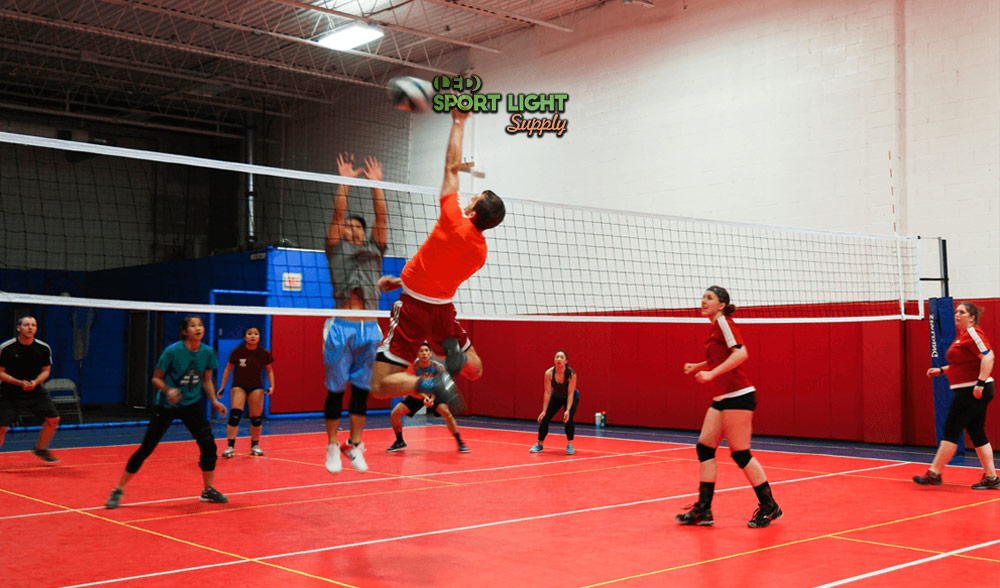
For volleyball training, the lighting should provide a minimum of 200 to 400 lux (19 to 37 fc). This level of illumination supports players of all skill levels. Beginners need sufficient lighting to learn fundamental skills such as serving, passing, attacking, and blocking. For advanced players, proper lighting helps enhance focus and teamwork, ensuring that attackers can perform at their best and blockers can minimize errors.
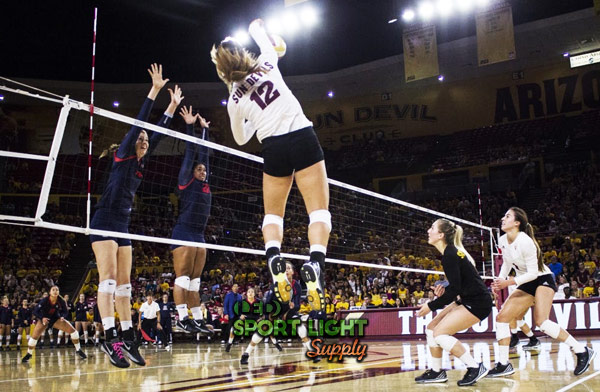
High School, College, or Local Competition
During high school, college, or local competitions, the lighting standard should be set at 500 lux (46 fc). This is slightly higher than the training level to accommodate the competitive nature of these events. Adequate brightness helps prevent accidental collisions and supports players as they refine their skills in a competitive setting.
Regional Broadcast
When volleyball matches are broadcast regionally, the lighting level needs to be at least 800 lux (74 fc). This higher illumination ensures that video cameras capture high-quality images with enhanced contrast. Bright lighting makes the players and coaches appear more vibrant, allowing viewers to fully appreciate the action, including each jump set and back row attack.
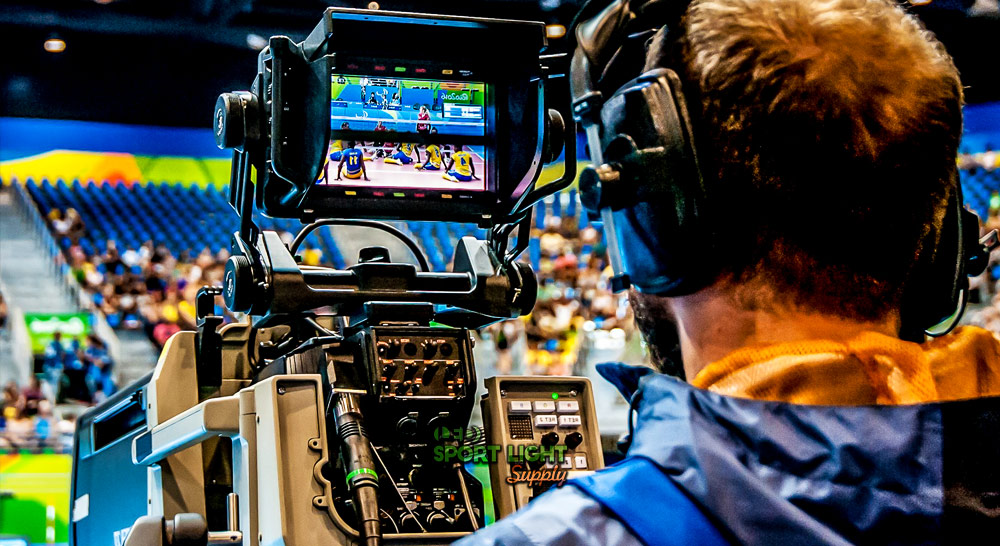
National Broadcast
For national broadcasts, the lighting requirement increases to 1,000 lux (93 fc). This standard ensures excellent visibility for players, spectators, and broadcasters alike. The lighting setup may vary slightly depending on the federation or association guidelines. In some cases, special regulations may apply for national tournaments, so it’s important to consult the relevant guidelines for specific requirements.
National Championships, Including Olympic Games and NCAA Tournaments
Elite events such as the Olympics and NCAA championships require top-tier lighting standards of 1,500 lux (140 fc). This high level of illumination ensures optimal conditions for broadcasting and provides viewers with the most realistic colors and clear images of the action. At this level, only the highest quality lighting products and techniques are used to deliver a premium viewing experience.
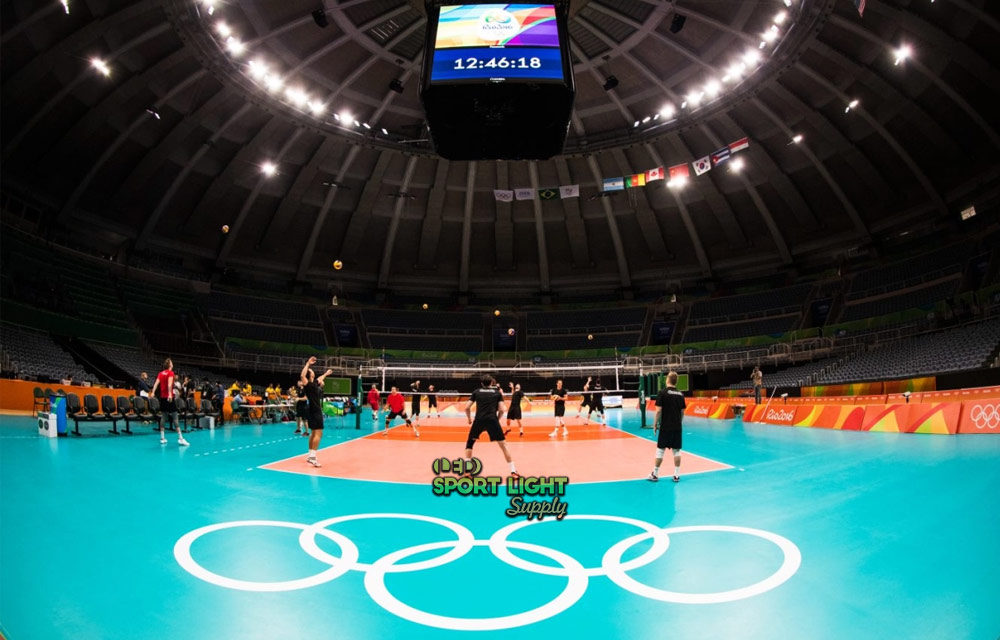
Lighting Uniformity Requirement
Uniform light distribution is crucial for maintaining consistent illumination across the volleyball court. An even lighting setup allows players to perform effectively and ensures that the court is well-lit from all angles. Variations in light intensity can disrupt a player’s focus, especially during critical moments such as quick sets. To assess lighting uniformity, multiple lux measurements are taken across the court. The minimum lux value is divided by the maximum lux value to determine the uniformity ratio, which is then compared to the required standard.
Training
For training sessions, a lighting uniformity ratio of 0.4 to 0.5 is recommended. This level of uniformity supports both recreational and competitive training, providing sufficient light for players to practice various skills. The uniformity ensures that middle hitters can move smoothly and blockers can practice without distraction. Advanced training sessions with complex tactics like shoot, tandem, and double-quick sets benefit from the higher end of this range, which helps maintain consistent lighting across different areas of the court.
High School, College, or Local Competition
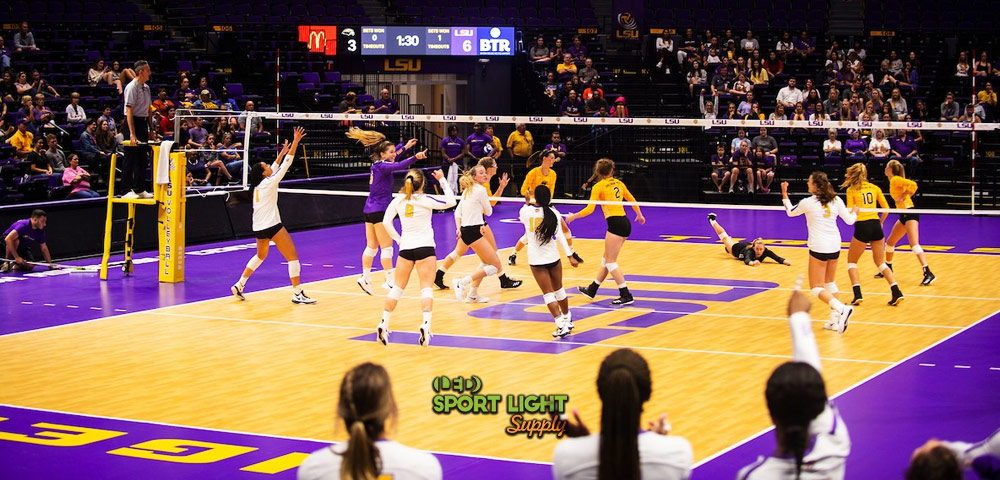
The standard for high school, college, or local competition is a lighting uniformity ratio of 0.5. This ensures that the entire court is evenly lit, promoting player safety and performance. Achieving this standard often requires precise calibration using a lux meter to ensure optimal light distribution. Adhering to these guidelines is essential for maintaining a fair and safe playing environment, as outlined by the relevant sports associations.
Regional Broadcast
For regional broadcasts, a uniformity ratio of 0.6 is recommended. Higher uniformity levels help ensure clear and consistent imagery, reducing the appearance of poorly lit areas on camera. This enhances color contrast and overall picture quality, crucial for engaging viewers. Additionally, it is important to use flicker-free floodlights to prevent disruptions during live streaming. Proper installation and calibration are key to maintaining this standard and providing a high-quality viewing experience.
National Broadcast
In national broadcasts, the uniformity ratio should be between 0.6 and 0.7. This level of uniformity ensures that the court is well-lit for both players and spectators, enhancing the visual appeal of the match. Spotlights may be used to provide additional illumination and focus attention on key moments of the game. Maintaining high lighting uniformity is important for showcasing the skill level of the players and attracting larger audiences, as well as ensuring a professional presentation of the event.
National Championships, Including Olympic Games and NCAA Tournaments
For national championships such as the Olympics and NCAA tournaments, a uniformity ratio greater than 0.7 is required. High uniformity reduces shadows and ensures that the entire court is evenly illuminated, contributing to a high-quality visual experience. Both indoor and outdoor lighting fixtures must be carefully designed and positioned to achieve this standard. Strict adherence to these lighting requirements is essential for maintaining the integrity and professionalism of elite events.
Color Temperature
LED lights offer versatility in lighting design, allowing for precise control over the appearance of light. The Kelvin scale, which measures color temperature, ranges from 3,000 to 7,500 K for most LED lights. Lower Kelvin values produce a warmer, yellowish light, while higher values yield a cooler, bluish hue. For volleyball courts, selecting the appropriate color temperature is crucial for creating the right environment:
Recreational Play
For recreational volleyball, a warm white or cool white light with a color temperature around 5,000 K or slightly less is ideal. This range provides a comfortable and natural lighting environment that enhances visibility while maintaining a pleasant ambiance for casual play.
Competitions
In competitive settings, such as tournaments and matches, a cooler white light with a color temperature greater than 5,000 K is preferred. This cooler light enhances contrast and detail, which is essential for high-stakes games where optimal visibility and precision are critical.
Anti-Glare Requirement
Designing lighting for volleyball courts involves addressing glare to ensure player comfort and safety. Proper anti-glare measures are essential to maintain the players’ psycho-physical well-being and to make the playing area and surrounding stands more comfortable. The glare rating should generally be below 50 (GR <50) for effective illumination.
To achieve this, it is recommended to work with professionals who can perform precise glare rating calculations using advanced tools like DIALux software. This ensures that the lighting setup minimizes glare and provides a high-quality visual experience for both players and spectators.
Flicker-Free Requirement
Flicker-free lighting is crucial, especially for broadcasts and slow-motion camera work. Flickering can disrupt live streaming and recordings, particularly during slow-motion captures of fast-paced actions, such as a setter preparing to spike the ball. Standard LED lights may produce a strobe light-like effect that affects both recordings and live streams. Ensuring that lights are flicker-free helps to provide a smooth and clear visual experience during live events.
Light Spill (Light Pollution)
For outdoor volleyball courts, it is important to control light spill to prevent light pollution. The lux level around the court should be kept below 20 lux at a distance of 5 meters from the court’s edge. Excessive light can lead to unwanted light pollution and impact the surrounding environment.
Effective shielding, careful positioning of floodlights, and adjusting the vertical angles of lights can help mitigate light spill. In some cases, adding extra fixtures or adjusting the brightness of existing lights may be necessary to balance illumination and reduce light pollution.
Importance of Meeting the Lighting Requirements for the Volleyball Court
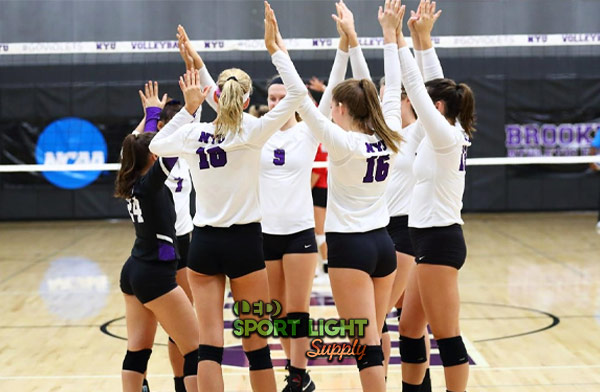
Enhanced Vision for Players and Referees
A well-designed lighting system is crucial for the performance of volleyball players and referees. Adequate lighting ensures that players can see the ball clearly and react quickly, which is essential for effective attacking and blocking. For referees, proper illumination is vital for accurate decision-making. Increased lux levels for higher levels of competition help both players and referees perform their roles effectively, reducing errors and enhancing the overall quality of the game. Good lighting also mitigates issues like glare and uneven light distribution, which can interfere with the players’ and referees’ ability to judge the game accurately.
Creating an Atmosphere for Spectators
Proper adherence to lighting regulations transforms the volleyball arena into a captivating environment. The court becomes a vibrant stage where each team competes in a 9m × 18m (29.5ft × 59.1ft) space, showcasing synchronized team play and individual skills. Volleyball’s fast-paced and intense nature makes every play dramatic, and high-quality lighting enhances this excitement. Spectators are more engaged when they can clearly see the action and experience the game’s atmosphere fully. Effective lighting design not only improves the visual appeal of the game but also amplifies the audience’s enjoyment and excitement.
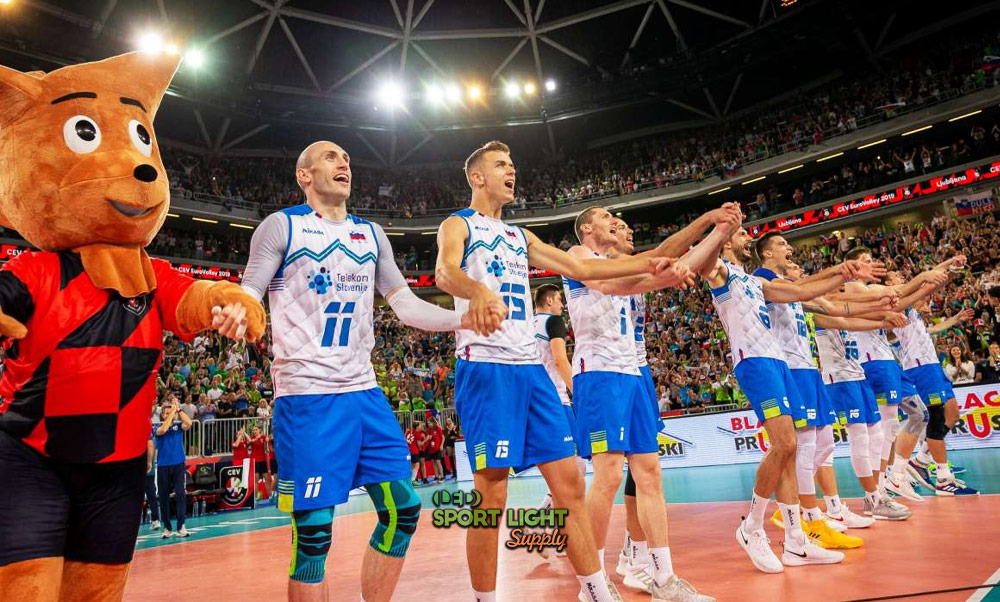
Shadowless and Flicker-Free Lighting for TV and Broadcasting
For TV broadcasts and live streaming, shadowless and flicker-free lighting is essential. High-quality LED lights that meet lighting standards provide clear, consistent visibility, making every shot look its best. This is particularly important for capturing the fast movements and intricate details of the game. Proper lighting ensures that viewers experience high-quality visuals, which enhances their enjoyment and keeps them engaged. Failing to meet these lighting standards can lead to poor broadcast quality and may even result in disqualification for sports facilities or clubs.
Better Advertisement Placement
A well-lit volleyball court is vital for effective advertisement placement. When matches are broadcast live, the visibility of advertisements is significantly impacted by the quality of the lighting. Well-lit courts showcase ads clearly, helping sponsors reach their target audience and drive traffic to their services or products. Poor lighting can reduce the effectiveness of these ads, leading to diminished interest from potential sponsors and financial losses for sports facilities and clubs. Investing in proper lighting design is crucial for maximizing advertising revenue and attracting sponsors.
Conclusion
Meeting the lighting requirements for a volleyball court is essential for optimizing player performance, enhancing spectator experience, and ensuring high-quality broadcasts. Proper illumination improves visibility for both players and referees, creates an engaging atmosphere for fans, and ensures clear, flicker-free visuals for television and live streaming. Additionally, effective lighting maximizes the impact of advertisements, attracting sponsors and generating revenue. Investing in appropriate lighting not only elevates the game but also supports the overall success and professionalism of volleyball events.
